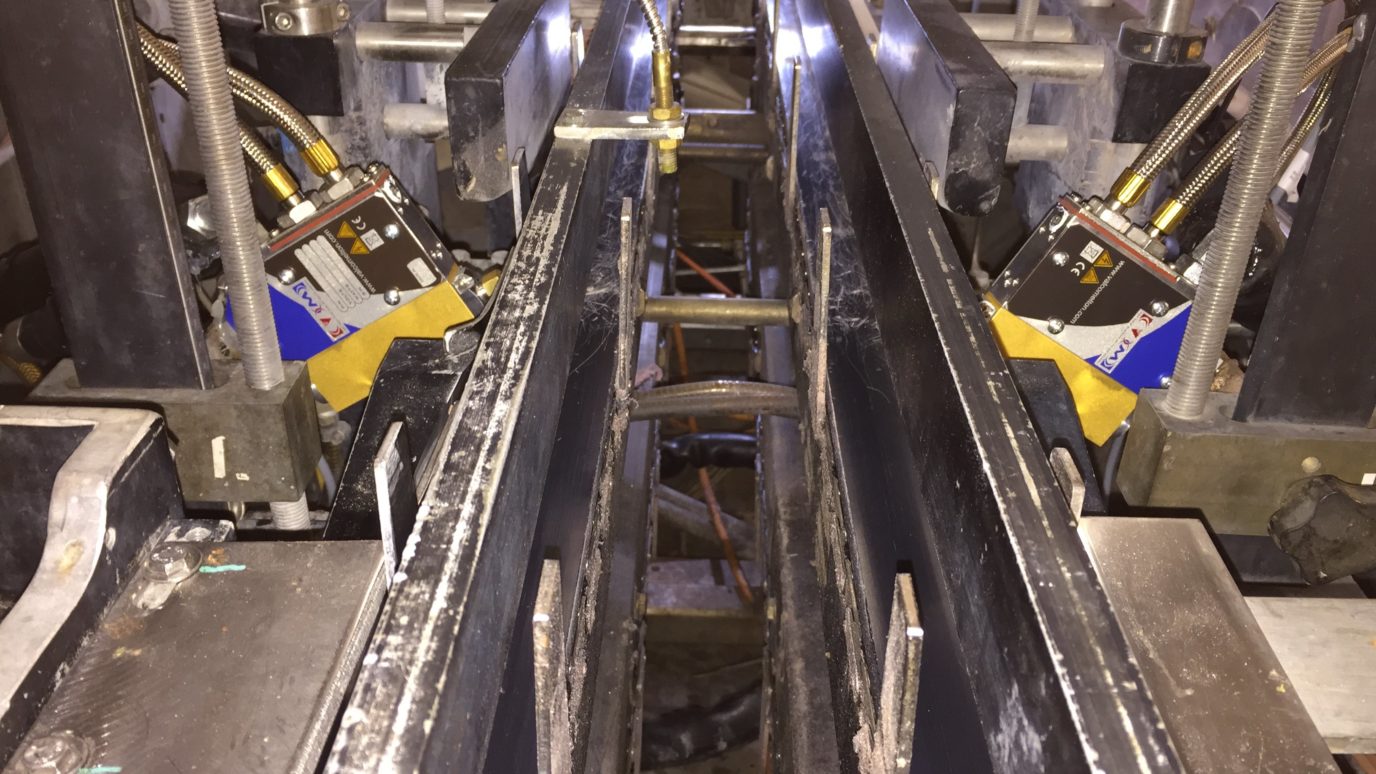

NiMCO Corporation is an American manufacturer of world class carton form/fill/seal machines located in Crystal Lake IL. NiMCO was formed in 1962 when the milk carton was changed from a wax coated to a heat sealable plastic-coated paperboard carton. They designed a carton erecting and bottom sealing machine for the small dairies which already had filling and top sealing equipment. In 1965, NiMCO added a new filler/sealer to complement its bottom former. Then in 1967, NiMCO marketed the Model 500 Former/Filler/Sealer which helped with the growth and survival of many small and medium sized dairies.
NiMCO was acquired in 1972 by George L. Bachner CMfgE, and with the help of his twin sons Larry and Jerry, many technological innovations were incorporated into the machines making them more reliable and easier to operate and maintain.
Safety Standards Change
As machine safety standards evolved and the need for safer machines became evident, NiMCO started adding personnel protection devices in the form of hard guard doors with safety rated switches and control units to monitor these switches. PLC’s were also now being used in place of earlier control systems as NiMCO led the way in packaging innovations.
Global monitoring
When NiMCO Corporation was faced with the necessity of being able to troubleshoot the machine safety system installed on their world class carton form/fill/seal machines, they contacted elobau sensor technology, Inc.. They were already using safety control units from elobau, along with input expansion units, but these devices did not have the capability of communicating with the outside world. The PLC they were using did and they needed the same flexibility with the machine safety system. They also needed to reduce the footprint of the current system without sacrificing functionality. After looking at several options, they decided to use the elobau programmable safety system for several reasons. One was the fact that the previous units worked well and they were also using elobau’s door sensors and did not want to change. Another reason was the ease of programming the safety controller (eloProg system) with drag and drop function block style programming. The eloProg system also allowed communication over Ethernet IP, which was also being used by the PLC. This allowed NiMCO to communicate with both systems from anywhere utilizing the Internet.
New vs. Old
Robert Mensing, one of NiMCO’s Control Systems engineers said, “Previous systems used separate safety relays (also from elobau). The use of a single programmable safety controller moved all safety input signal functions to one single device. Wiring between separate safety relays was eliminated simplifying the safety circuit wiring. The safety controller also has a smaller footprint, thus freeing up panel space”.
World Wide Access
Because NiMCO could now monitor not only the PLC and its operations, but also the Machine Safety system, over the internet, service calls were also minimized saving both NiMCO and their customers travel and down time costs. Not to mention that this is also a great selling point when marketing their machines.
Another Project
Later, elobau was again approached by NiMCO to see if they could offer a pigtail version of the door guard switch they currently used. elobau was more than happy to accommodate one of their best customers, and within 2 months had prototypes available for NiMCO to test. Mr. Mensing stated “The door switches previously used were a cable type of varying lead length. The cables were wired back to the main control enclosure. Replacement of a door switch was difficult due to the long cable length and routing of the cable. The new door switch has a short lead to an M8 connector so a standard M8 cord set is used to wire to the safety controller. Any replacement of a door switch is a simple unplug and plug of a connector.” This change in product allowed NiMCO to only have to stock one type of sensor. Previously, they had many types with varying cable lengths. It also kept any repair times to a minimum because NiMCO would no longer need to string long sections of cable through the structure of the machine should a sensor become damaged. It also allowed the service people to get the customer up and running again in a timely manner….a win/win combination.
In Summary
All in all, the change to a programmable controller minimized build time, reduced real estate within the panel, resulted in improved troubleshooting through diagnostics and allowed communication between the safety system and the control PLC, something that was not possible with the safety relays. “Operation of the machine remains the same as previous, but wiring time between separate safety relays is eliminated, plus startup time and debug of the safety system is reduced due to more simplified wiring” ….. Rob Mensing.

Comments
write a comment